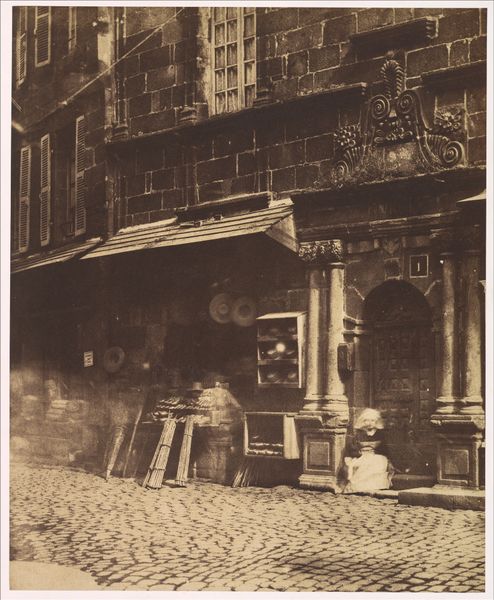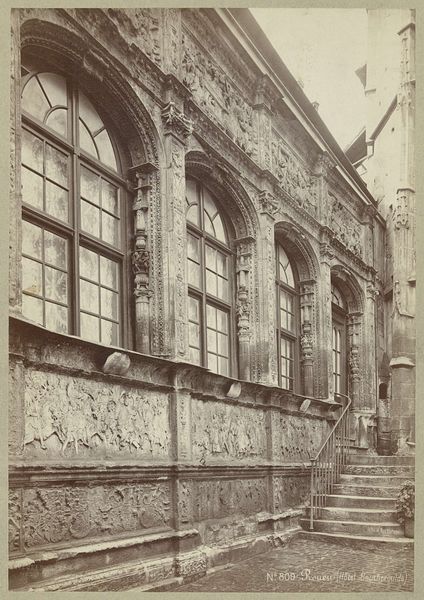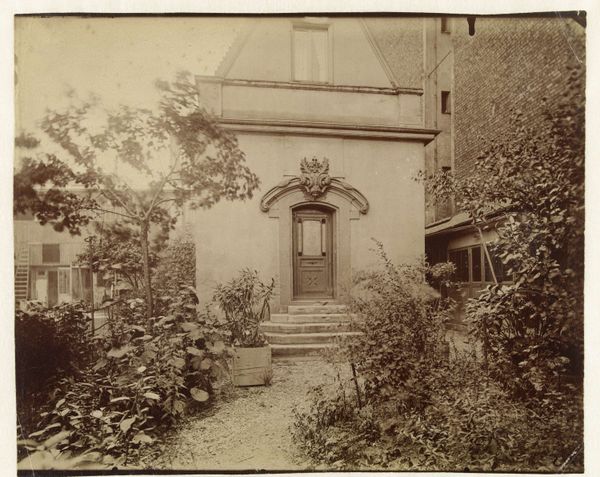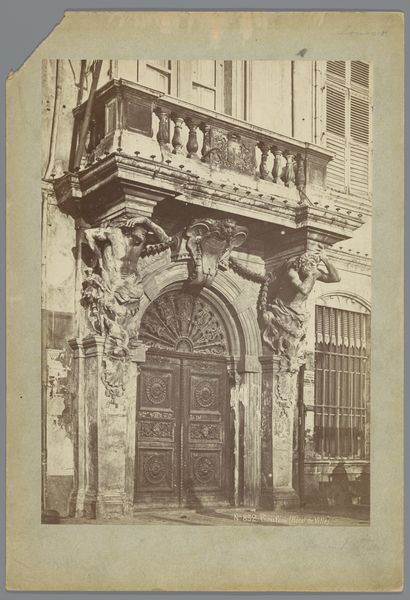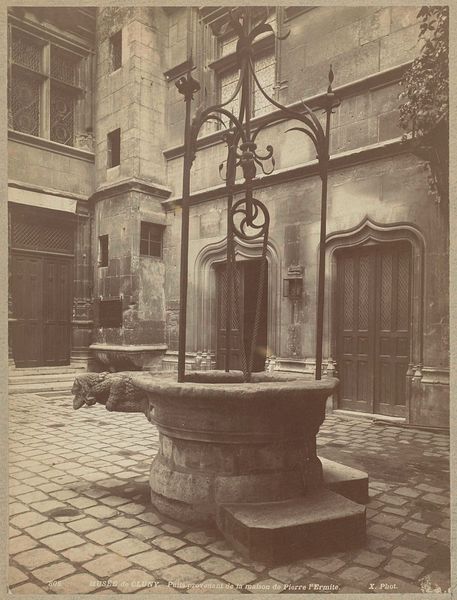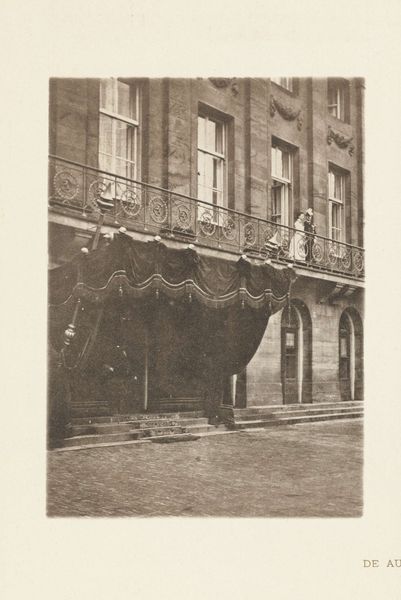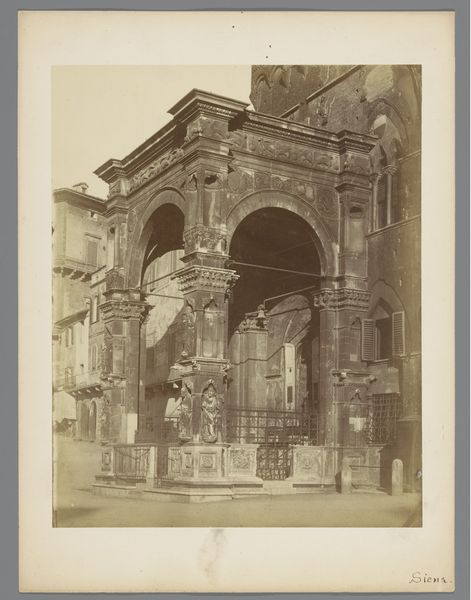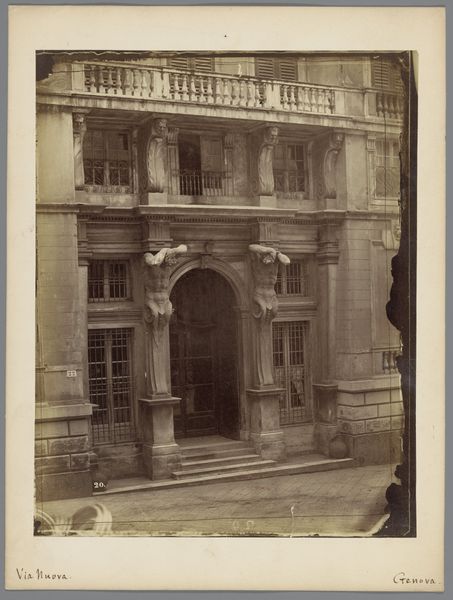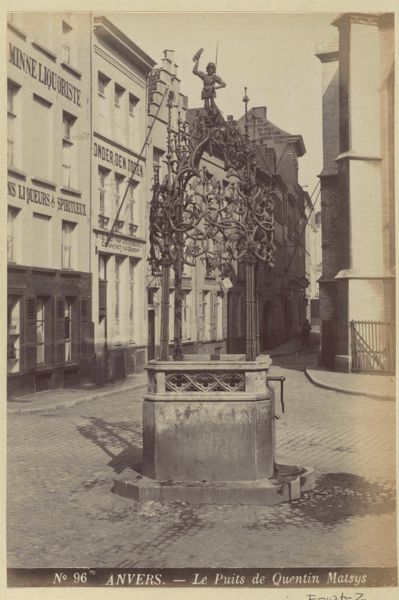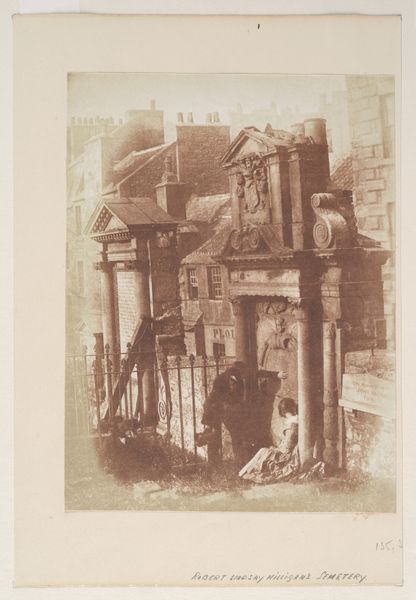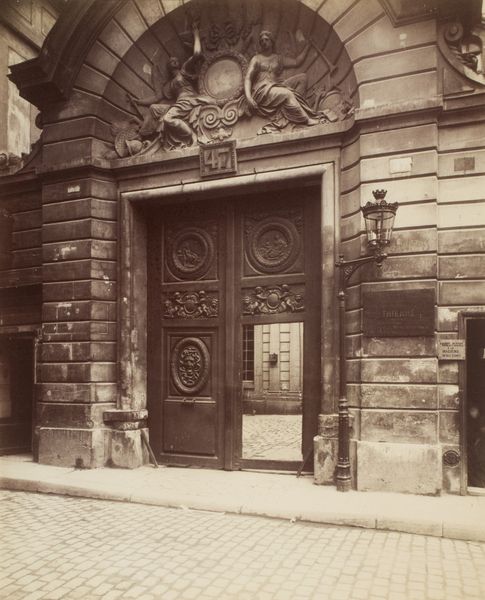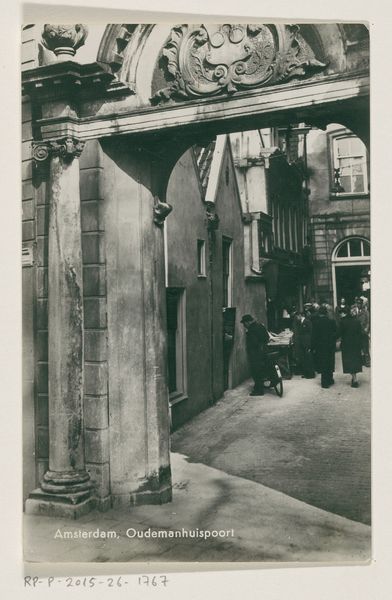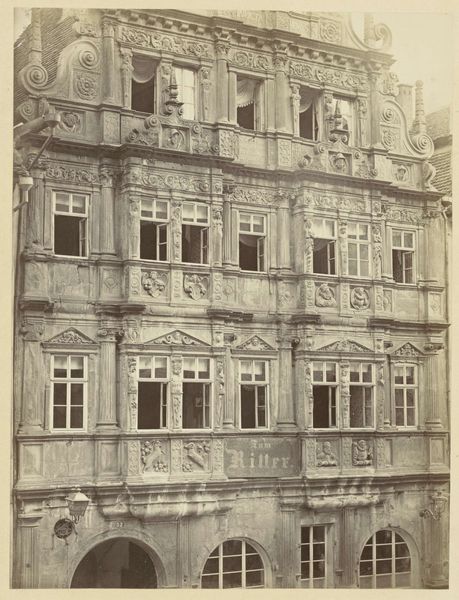
Dimensions: image/sheet: 22 × 18 cm (8 11/16 × 7 1/16 in.)
Copyright: National Gallery of Art: CC0 1.0
Editor: This is Eugène Atget’s photograph, "Ancien Hôtel des Parlementaires, 3 Rue des Lions," taken around 1910. It captures this quiet courtyard scene; the muted sepia tones give it a very nostalgic feeling. What story do you think it tells? Curator: It's a beautiful image, and I immediately see the weight of history. Atget documented pre-Haussmann Paris, a city rapidly transforming. This photograph becomes a poignant record of what was being lost, specifically these unique architectural details representing a disappearing aristocratic presence within an increasingly bourgeois urban landscape. Editor: Disappearing aristocratic presence - that's interesting. How do you see that reflected in the photo itself? Curator: Notice the ornate fountain and the sculpted details; the little balconies above? They hint at a past era of wealth and power. Now look at the almost-dilapidated condition. What we're really seeing is the tension between idealized historical aesthetics and lived experiences – whose stories are being valued and preserved? How might Atget be subtly commenting on issues of social class and displacement through this seemingly simple photograph? Editor: That's a perspective I hadn't considered. I was just looking at the visual elements. You’ve shifted my focus toward the photograph as a historical document about class, wealth, and power dynamics in Parisian society. Curator: Exactly. And how might the camera itself, this new technology at the time, become implicated in these shifts of power, of preserving some stories while obscuring others? Who is allowed to own, control, and narrate history? Editor: That really gives me a lot to think about; thank you for sharing. Now I want to go learn more about what was happening in Paris when this was taken. Curator: Wonderful! It's important that we actively continue to unpack historical perspectives as critical components for contemporary understandings.
Comments
No comments
Be the first to comment and join the conversation on the ultimate creative platform.
